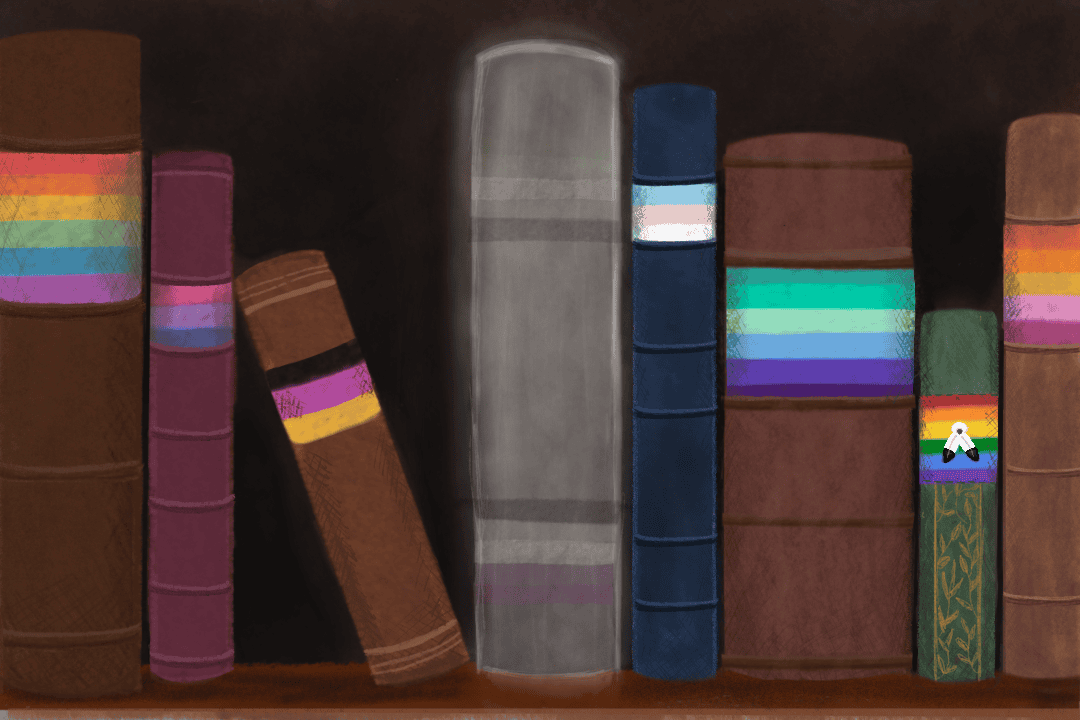Content warning: This article contains descriptions of heterosexism.
In 2021, Statistics Canada found that Canada is home to approximately 1 million 2SLGBTQIA+ people. However, people often criticize academia and the media for not proportionately representing every part of this multi-variant community.
In interviews with The Varsity, aromantic and asexual students noted dissatisfaction with the ways their classes represented or discussed sexuality. Across U of T’s courses, only a single course description explicitly mentions asexuality.
Members of the university community have since compiled a resource that aims to make academic literature on asexuality and aromanticism more accessible.
Aro and ace students at U of T
Aromantic or ‘aro’ people experience little to no romantic attraction, while asexual or ‘ace’ people experience little to no sexual attraction. Both aromanticism and asexuality exist on a spectrum and one can be both aromantic and asexual, or only one of the two. Aromantic or asexual people can form intimate relationships with others, including queerplatonic partnerships.
Juliana Lourenco — a third-year student studying human biology and immunology — recalled that in a sociology class she took, asexuality was briefly mentioned and the professor failed to provide an accurate definition of the term.
Hao Di — a fourth-year student studying mental health studies — expressed its disappointment with the heteronormativity that research papers and textbooks enforce.
Lourenco and Di noted that a lack of acknowledgement of aromantic and sexual identities in education has caused them to experience uneasiness during social interactions with their peers.
“Whenever people talk about, ‘oh, that professor’s really hot’ — immediately, I feel like I’ve become an alien a little bit because I remember that attraction exists.” Lourenco shared.
For Di, a peer once refused to believe it could not feel romantic attraction after Di rejected their romantic advances.
Lourenco and Di both said that they found a sense of belonging on campus through LGBTOUT — a student organization that provides a safe and inclusive space, resources, and programming for 2SLGBTQIA+ students.
Progressing toward better representation
Queer representation has increased in Western media. In 2019, LGBTQ people comprised 6.7 per cent of the top ten recurring cast members in the top 300 broadcast, cable, and streaming shows. In 2020, ten per cent of Hollywood studio films included LGBTQ+ characters.
However, according to the Society of Alberta Asexuals and Aromantics, not every identity receives proportionate representation. People who identify as aromantic and asexual tend to be underrepresented both in popular media and within the 2SLGBTQIA+ community.
In September 2023, Liza Blake — an assistant professor in the UTM graduate department of English — and Jenna McKellips — a graduate student in English language and literature — released an asexuality and aromanticism bibliography, compiling academic and non-academic writings throughout literary history.
Blake and McKellips aimed to make aromantic and asexual peoples’ experiences more accessible in the literary world and help locate research on aromanticism and asexuality in relation to intersecting identities.
Blake — who identifies as both aromantic and asexual — has also taught a course at UTM called “Reading Asexuality and Aromanticism,” which will be available again in the fall 2024.
“Despite the explosion of research into asexuality, undergraduates have reported to me that most queer studies courses at the U of T don’t take it up or have anything to say about it,” wrote Blake in an email to The Varsity.
Aside from the lack of representation in queer studies courses, Blake also points out the university’s insistence on using the acronym “2SLGBTQ+” in promotional materials, excluding the “IA” portion which stands for intersex and asexual. She stated that such a gesture undermines the legitimacy of the aromantic and asexual communities, making it difficult for students to “take it up as the robust academic subject it is.”
In a statement to The Varsity, Allison Burgess — Director of U of T’s Sexual & Gender Diversity Office — wrote that the university uses 2SLBTQ+ as an acronym for “other longer and ever-evolving acronyms (e.g. 2SLGBTIPAAQQ+).” She added that “We lean on the plus to meaningfully include the diverse range of queer and trans identities.”
Moving forward, Blake would like to see queer studies taking up more research on aromanticism and asexuality.
“There are ways that the radical sex positivity rightly embraced by queer studies can sometimes tip into sex normativity, and I think this is a problem that persists for U of T students today, based on conversations I have had with our students,” wrote Blake.
Both Lourenco and Di noted that they hope that the 2SLGBTQ+ community can continue creating an inclusive environment for aromantic and asexual people.


